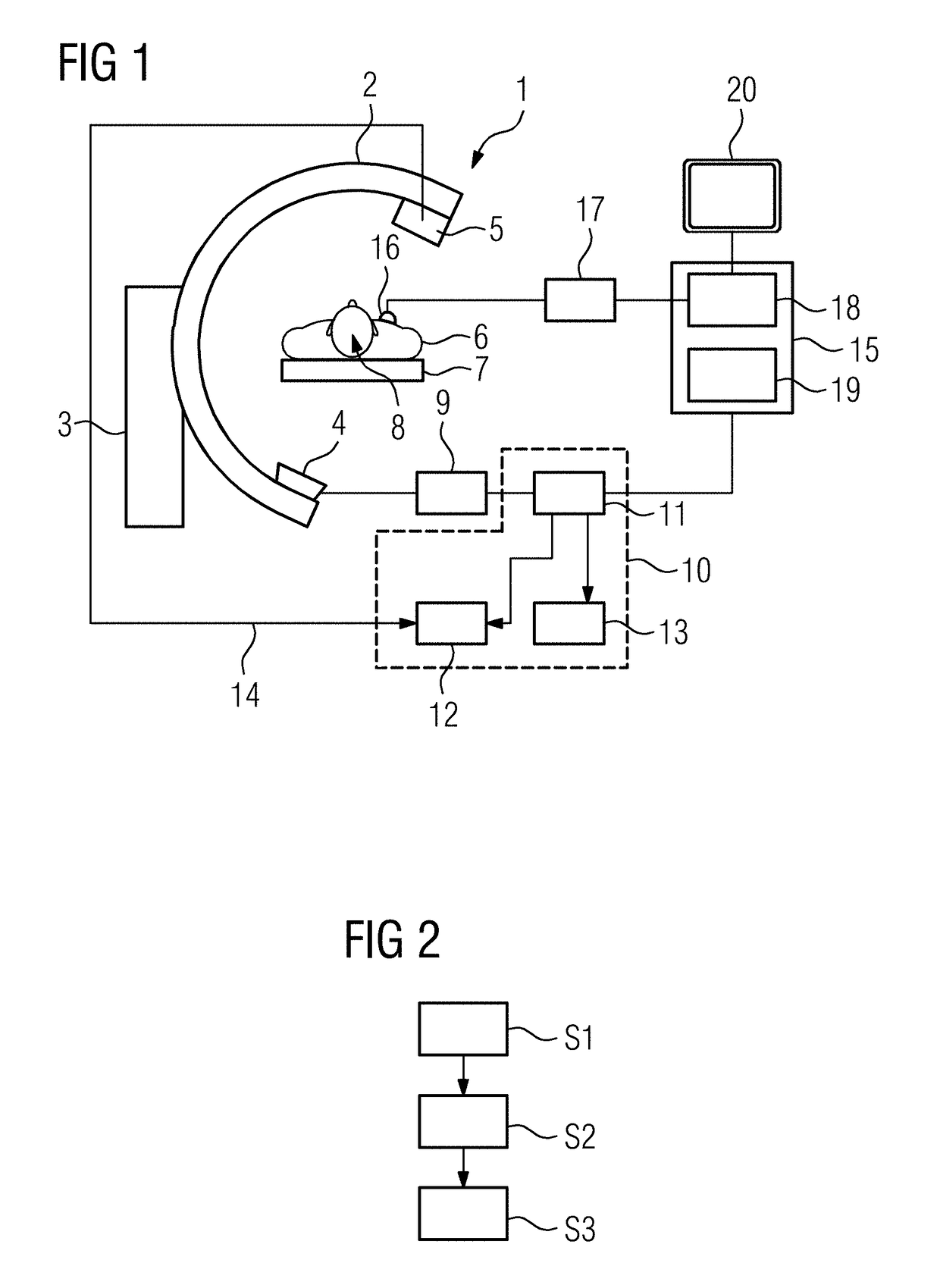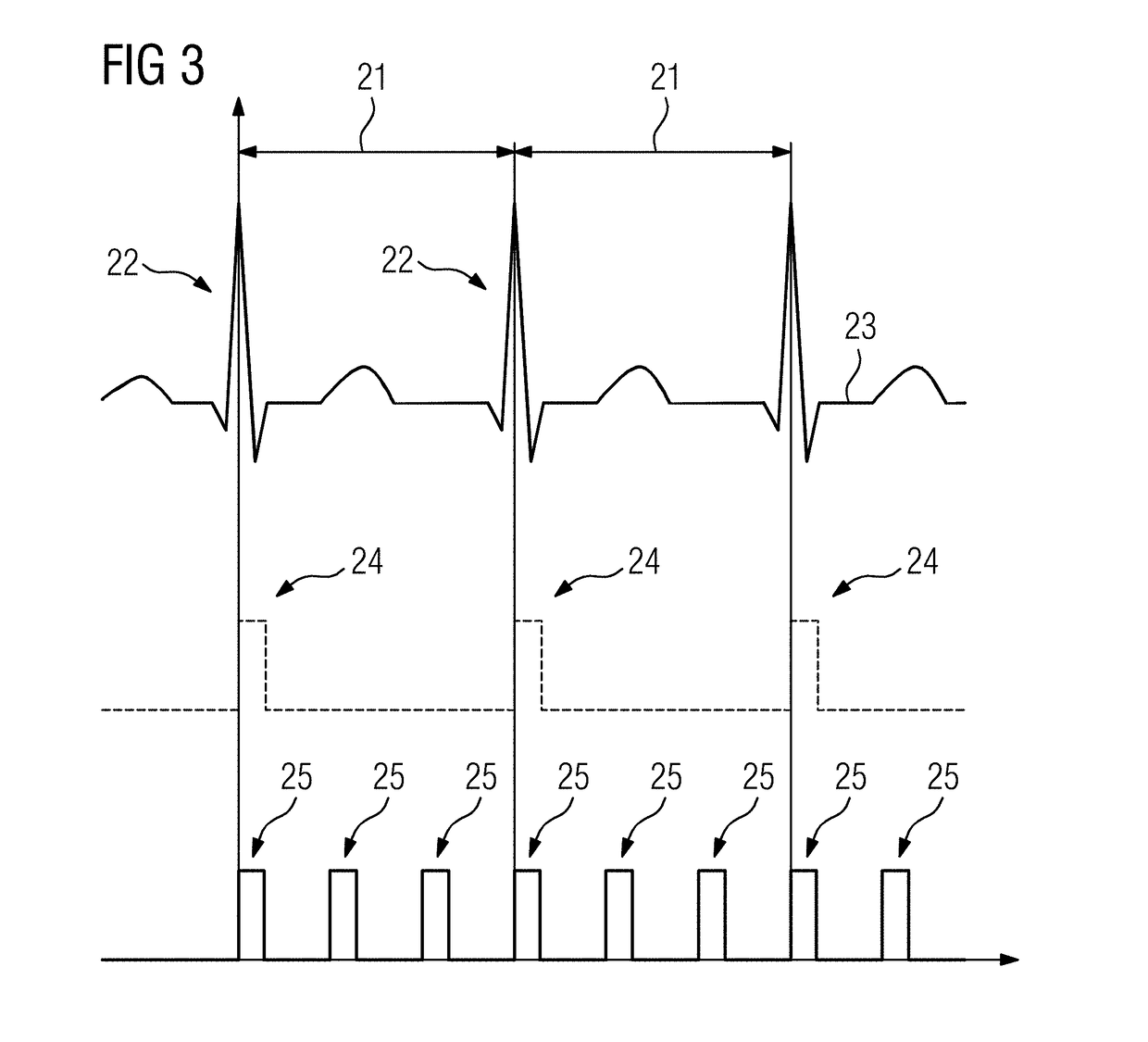Method for acquiring x-ray data, x-ray device, computer program and electronically readable storage medium
a technology of x-ray data and x-ray device, which is applied in the field of acquiring x-ray data, x-ray device, computer program and electronically readable storage medium, can solve the problems of insufficient rate of 15 images per second to sample heart motion adequately, diametrically opposed to the trend of decreasing patient x-ray dose or keeping patient dose low, and reducing patient x-ray dose and contrast agent. , the effect of increasing the accuracy of overlaying/
- Summary
- Abstract
- Description
- Claims
- Application Information
AI Technical Summary
Benefits of technology
Problems solved by technology
Method used
Image
Examples
Embodiment Construction
[0042]FIG. 1 depicts an example x-ray device 1, that is an angiography device including a C-arm 2 supported by a support 3. To opposite ends of the C-arm 2, an x-ray source 4 and an x-ray detector 5 are mounted. The C-arm may be positioned relatively to a patient 6 supported by a patient table 7 to realize different acquisition geometries.
[0043]The x-ray device 1 may, for example, be used to survey a minimally invasive intervention / operation of a patient 6, for example, for tracking a medical instrument 8 inserted into a patient 6, for example a catheter.
[0044]A voltage for the x-ray source 4, e.g. an x-ray tube, is provided by an x-ray generator 9 that receives control signals from control device 10, that is configured to perform the steps of a method. The control device 10 includes at least a control unit 11, an image evaluation unit 12 and a user interface 13. The image evaluation unit 12 also receives raw x-ray data from the x-ray detector 5 according to arrow 14.
[0045]The x-ray...
PUM
 Login to View More
Login to View More Abstract
Description
Claims
Application Information
 Login to View More
Login to View More - R&D
- Intellectual Property
- Life Sciences
- Materials
- Tech Scout
- Unparalleled Data Quality
- Higher Quality Content
- 60% Fewer Hallucinations
Browse by: Latest US Patents, China's latest patents, Technical Efficacy Thesaurus, Application Domain, Technology Topic, Popular Technical Reports.
© 2025 PatSnap. All rights reserved.Legal|Privacy policy|Modern Slavery Act Transparency Statement|Sitemap|About US| Contact US: help@patsnap.com


